Oral
Optimized Sampling Patterns & Tailored Forward Models
ISMRM & ISMRT Annual Meeting & Exhibition • 10-15 May 2025 • Honolulu, Hawai'i

| 15:30 |
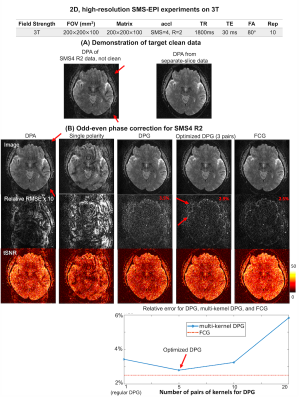 |
1363. Field-Correcting
GRAPPA (FCG): a generalizable technique to correct
spatiotemporal varying odd-even phase errors in EPI, SMS-EPI and
3D-EPI

N. Wang, D. Abraham, H. Wu, C. Liao, X. Cao, J.
Polimeni, R. Huber, Q. Liu, L. Ning, Y. Rathi, N. Abad,
B. Yang, A. Kerr, C-F Westin, K. Setsompop
Stanford University, Stanford, United States
Impact: A field-correcting GRAPPA (FCG) technique for
high-quality correction of odd-even phase errors in EPI and
a flexible pipeline for separate data correction and
reconstruction was developed and validated, unleashing EPI
applications for higher undersampling, stronger gradient
systems, and higher fields.
|
| 15:42 |
 |
1364. Multi-shot
Dual-Polarity GRAPPA for Nyquist Ghost and Fuzzy Ripple Artifact
Correction of Echo-Planar Imaging
J. Zhang, T. Qian, B. Zhang, Q. Li, W. Liu
Qiyuan Lab, Beijing, China
Impact: The proposed method can correct or reduce two
common artifacts in sub-millimeter fMRI without reducing the
temporal resolution. It may help to improve the image
quality and stability of high-resolution fMRI, especially in
ultra-high-field systems.
|
| 15:54 |
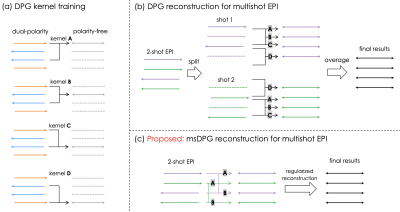 |
1365. Robust
Nyquist ghost correction for high-resolution EPI using multishot
dual-polarity GRAPPA reconstruction

Y. Jiang, Y. Jun, Q. Liu, W. Zhong, Y. Rathi, H. Guo, B.
Bilgic
Tsinghua University, Beijing, China
Impact: The proposed msDPG method provides robust
Nyquist ghost correction for multishot EPI, effectively
suppressing ghosts on modern scanners and facilitating
seamless integration with other advanced reconstruction
techniques.
|
| 16:06 |
 |
1366. A
Novel k-Space Model for Non-Cartesian Reconstruction

C-C Chan, J. Haldar
University of Southern California, Los Angeles, United States
Impact: We identify previously-unknown issues with the
most popular (decades-old) approach to model-based
non-Cartesian MRI reconstruction, and propose a new modeling
approach that resolves these issues and offers better
modeling accuracy, reduced susceptibility to artifacts, and
greater computational efficiency.
|
| 16:18 |
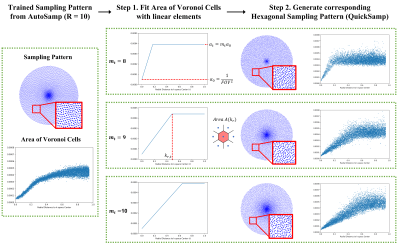 |
1367. QuickSamp:
Towards simple, real-time-optimized Sampling Patterns for 3D
Accelerated MRI

J. Bae, C. Alkan, S. Vasanawala, J. Pauly, K. Setsompop
Stanford University, Stanford, United States
Impact: Our method simplifies the complexity and
drastically improve the speed of sampling pattern generation
using only a few parameters. This eliminates extensive
retraining, offering a practical alternative for optimizing
MRI acquisition across different configurations and use
cases.
|
| 16:30 |
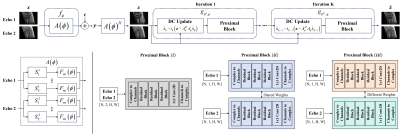 |
1368. Joint
Optimization of Sampling Pattern and Image Reconstruction for 3D
Dual-Echo Spoiled Gradient Echo MRI
A. Sun, C. Alkan, M. Alley, Y. Wu, C. Zhang, A. Syed, J.
Pauly, D. Ennis, S. Vasanawala
Stanford University, Stanford, United States
Impact: This work offers a novel approach to
accelerating dual-echo MRI by enhancing image quality
through joint sampling and reconstruction optimization. Our
method provides valuable insights into sampling pattern
design and reconstruction strategies, potentially broadening
clinical applications of fast multi-echo MRI.
|
| 16:42 |
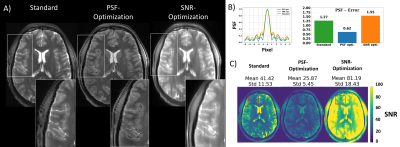 |
1369. Controlling
sharpness, SNR and SAR for 3D fast spin echo measurements at 7T
by end-to-end learning

P. Dawood, M. Blaimer, J. Herrler, P. Liebig, S.
Weinmüller, S. Malik, P. M. Jakob, M. Zaiss
University Hospital Erlangen, Erlangen, Germany
Impact: This work paves the way to the flexible tuning
of the PSF- or SNR-like flavour of dedicated variable flip
angles at 7T to enhance visibility of small stuctures or SNR
in 3D fast spin-echo sequences with very long echo trains.
|
| 16:54 |
 |
1370. MR
fingerprinting with implicit neural representation (FINR) for
free-breathing 3D whole-liver water T1, water T2, fat fraction,
and R2* mapping
C. Li, J. Li, J. Zhang, E. Solomon, A. Dimov, P.
Spincemaille, T. Nguyen, M. Prince, Y. Wang
Weill Cornell Medicine, New York, United States
Impact: Our work enables 3D whole-liver quantification
of water T1, water T2, PDFF, and R2* in a single
free-breathing MR acquisition. It also provides a novel
solution to reconstruct 5D MRI images (3D spatial + contrast
+ motion dimension) using INR.
|
| 17:06 |
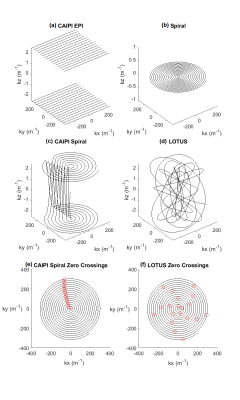 |
1371. Laterally
Oscillating Trajectory for Undersampling Slices (LOTUS)

M. Sothynathan, P. Dubovan, C. Baron
Western University, London, Canada
Impact:
We introduce a k-space trajectory that enables higher slice accelerations compared to traditional approaches, especially compared to Blipped-CAIPI EPI. This may be useful to reduce scan times for advanced diffusion MRI acquisitions or improve temporal resolution of functional MRI. |
| 17:18 |
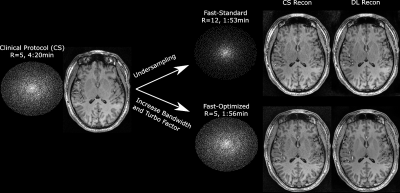 |
1372. Instead
of just undersampling, sample more and faster: 0.6mm isotropic
MPRAGE at 7T in under 2 minutes

T. Yu, J. Philippe, N. Montemayor, E. Sleight, A.
Klauser, L. Bacha, T. Di Noto, B. Maréchal, D. Nickel,
P. Liebig, T. Kober, T. Hilbert, G. F. Piredda
Siemens Healthineers International AG, Lausanne, Switzerland
Impact: This study demonstrates the effectiveness of
using deep learning image reconstruction in combination with
optimized sequence parameters for scan speed to further
accelerate a clinical MPRAGE acquisition, in contrast to
simply increasing undersampling factors.
|
The International Society for Magnetic Resonance in Medicine is accredited by the Accreditation Council for Continuing Medical Education to provide continuing medical education for physicians.